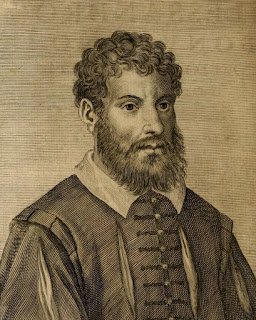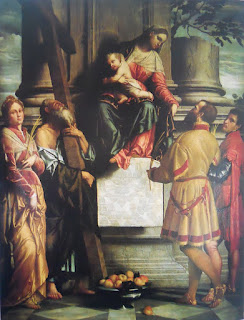Talented artist from Brescia acclaimed for sacred paintings and portraits
 |
| Bonvicino - known as Il Moretto - was born in Brescia but also worked in Bergamo |
Nicknamed Il Moretto da Brescia - the little moor from Brescia - Bonvicino collaborated with the Venetian artist Lorenzo Lotto in Bergamo and was commissioned by a number of churches and religious organisations in the city and province.
The portrait painter Giovanni Battista Moroni from Albino, in the province of Bergamo, was one of his pupils.
Bonvicino, sometimes known as Buonvicino, was born in Rovato, a town in the province of Brescia, about 40km (25 miles) southeast of Bergamo, in about 1498. It is not known how he acquired his nickname of Il Moretto.
He studied painting under Floriano Ferramola, but is also believed to have trained with Vincenzo Foppa, a painter who was active in Brescia in the early years of the 16th century.
It is believed he may also have been an apprentice to Titian in Venice and it is known that he modelled his portrait painting on the Venetian style. Bonvicino is believed to have admired Raphael, although there is no evidence he ever travelled to Rome. He specialized in painting altarpieces in oils rather than in fresco.
 |
| Il Moretto's Madonna and Child Enthroned with Saints at the Chiesa di Sant'Andrea |
Elsewhere in Bergamo, the Chiesa di Sant’Alessandro in Colonna in Via Sant'Alessandro in the Città Bassa has a Virgin adoring the Child by Bonvicino, while there is a Madonna and Child Enthroned with Saints in the Chiesa di Sant'Andrea in Via Porta Dipinta in the Città Alta.
Bonvicino's paintings can be found in many other churches in Brescia, Milan and Verona and in the collections of the National Gallery in London, the Metropolitan Museum in New York and the Hermitage in St Petersburg, as well as galleries in Milan, Venice, Paris, Vienna, Frankfurt, Oxford, Washington and Budapest, and the Accademia Carrara in Bergamo.
Bonvicino’s 1526 Portrait of a Man, which now hangs in the National Gallery, is said to be the earliest Italian full-length portrait. The setting for his subject, who is leaning on a classical column, was later to be emulated by Moroni.
Noted for his piety, Bonvicino prayed and fasted before embarking on any sacred work of art, such as painting the Virgin Mother. He spent most of his life in Brescia and belonged to two of the religious confraternities there. He died, aged about 56, in Brescia.